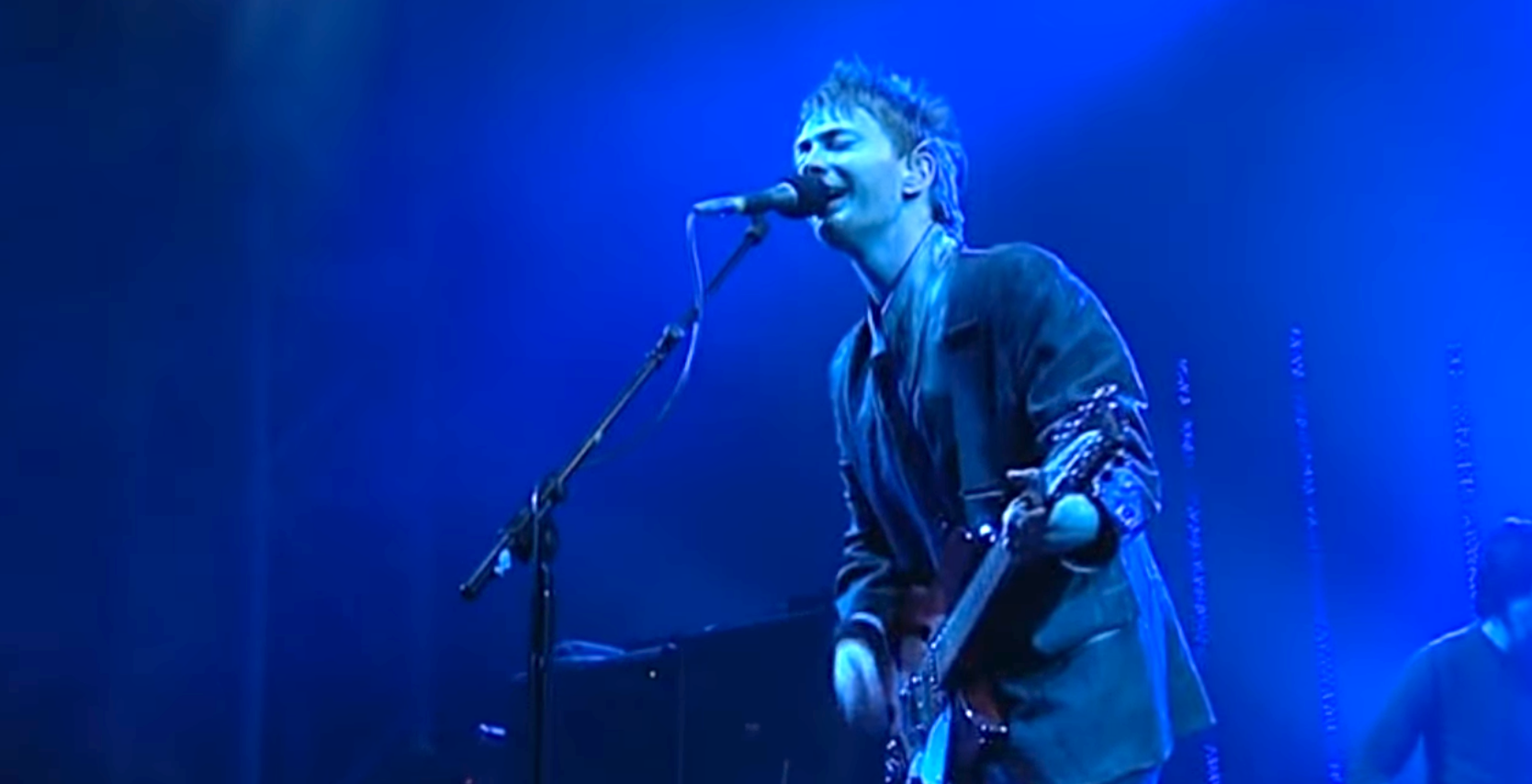Radiohead’s classic Ok Computer (1997) marked the start of the band’s transition from whiny, alt-rock newcomers to influential indie pioneers as the guitar-driven sound of their first two albums began to be tempered with the influence of electronic music, film scores and modern classical composers. The sprawling, unconventional structure of ‘Paranoid Android’ was apparently inspired by grandiose classics such as Queen’s ‘Bohemian Rhapsody’; although the song initially appears to conform to a traditional verse-chorus-verse model, the band continually add new material throughout the 6-minute epic to prevent the listener from ever becoming too comfortable.
Because of the structural anomalies of ‘Paranoid Android’, I’ve dispensed with the usual descriptions of song sections and opted for rehearsal marks instead, with each new theme having its own letter.
A disclaimer: I found this very challenging to transcribe, purely because the mix is so crowded in the lower frequencies, making the bass part difficult to isolate. Even when (ab)using EQ it’s hard to truly separate the bass line from the kick drum and three guitars. This is the burden of being a bassist: although our parts are often relatively simple, excavating them wth any degree of precision often requires a great deal of detective work and educated guessing.
Radiohead – ‘Paranoid Android’ bass transcription pdf
From the very outset, the form of the song requires close attention: the intro is six bars, and the verses are ten bars. Colin Greenwood’s bass enters with a brief 16th-note pickup into section B, which is the closest thing that ‘Paranoid Android’ has to a chorus. The bassline features frequent 16th-note syncopation, which can be challenging to read at first glance; notice how the repetition of the original A-Bb pickup at the end of the bar gives the line the sense of being ‘a bass part’ rather than just a collection of root notes.
The second verse and chorus (sections A2 and B2) provide us with more syncopated 16th-note reading practice before the introduction of a new theme at letter C. After being introduced in A minor, this new theme is then transposed into C minor and adapted to 7/8. We’re also treated to some nice chromaticism from Colin Greenwood, which might require some thought to find the best position(s) to play the part in.
Another disclaimer: I don’t actually know the correct protocol for beaming in 7/8; the groupings that Sibelius suggested made my eyes bleed, so I’ve gone with what I felt was easiest to read while also reflecting the meter’s 4+3 subdivision.
After repeating letter C’s theme several times (Jonny Greenwood’s guitar solo giving us a suitably chaotic addition to the already frantic atmosphere) the song suddenly shifts gears — both literally and figuratively — with letter D giving us some respite from the previous guitar onslaught. Layered vocal harmonies take centre stage here, with the bass entering towards the end of the section to help build up the dynamic level before the final return to section C’s theme.

